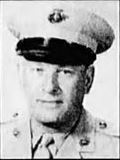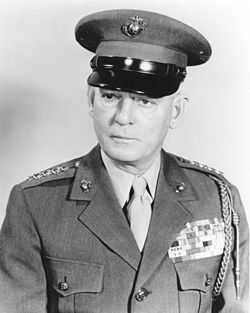
On 21 July 1944, United States Marine and Army forces invaded the island of Guam, the southernmost of the Mariana Islands chain in the Central Pacific, with the intent to take control of the island from the Imperial Japanese Army. Operation Forager II, as it was called by American planners, was a phase of the Pacific theatre of World War II.
Contents
- US command structure
- Naval
- Ground troops
- US forces
- Naval forces (Task Force 53 Southern Attack Force)
- Expeditionary troops (Task Force 56)
- Guam Island command
- Japanese forces
- Notes
- References
- Bibliography
The Guam landings had been tentatively set for 18 June but a large Japanese carrier attack and stubborn resistance by the unexpectedly large Japanese garrison on Saipan led to the invasion of Guam being postponed for a month.
The island was declared secure on 10 August 1944.

























